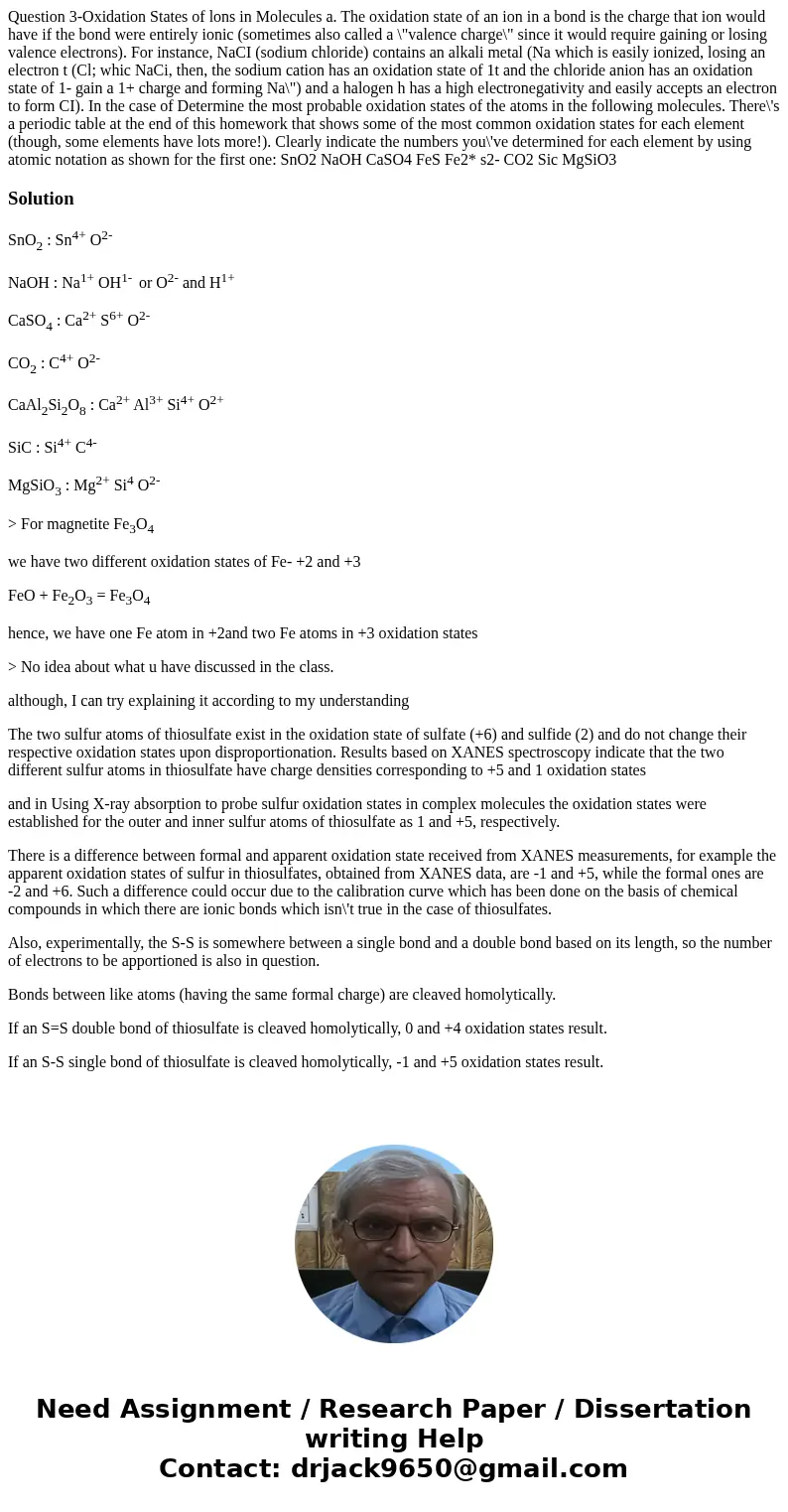Question 3Oxidation States of lons in Molecules a The oxidat
Solution
SnO2 : Sn4+ O2-
NaOH : Na1+ OH1- or O2- and H1+
CaSO4 : Ca2+ S6+ O2-
CO2 : C4+ O2-
CaAl2Si2O8 : Ca2+ Al3+ Si4+ O2+
SiC : Si4+ C4-
MgSiO3 : Mg2+ Si4 O2-
> For magnetite Fe3O4
we have two different oxidation states of Fe- +2 and +3
FeO + Fe2O3 = Fe3O4
hence, we have one Fe atom in +2and two Fe atoms in +3 oxidation states
> No idea about what u have discussed in the class.
although, I can try explaining it according to my understanding
The two sulfur atoms of thiosulfate exist in the oxidation state of sulfate (+6) and sulfide (2) and do not change their respective oxidation states upon disproportionation. Results based on XANES spectroscopy indicate that the two different sulfur atoms in thiosulfate have charge densities corresponding to +5 and 1 oxidation states
and in Using X-ray absorption to probe sulfur oxidation states in complex molecules the oxidation states were established for the outer and inner sulfur atoms of thiosulfate as 1 and +5, respectively.
There is a difference between formal and apparent oxidation state received from XANES measurements, for example the apparent oxidation states of sulfur in thiosulfates, obtained from XANES data, are -1 and +5, while the formal ones are -2 and +6. Such a difference could occur due to the calibration curve which has been done on the basis of chemical compounds in which there are ionic bonds which isn\'t true in the case of thiosulfates.
Also, experimentally, the S-S is somewhere between a single bond and a double bond based on its length, so the number of electrons to be apportioned is also in question.
Bonds between like atoms (having the same formal charge) are cleaved homolytically.
If an S=S double bond of thiosulfate is cleaved homolytically, 0 and +4 oxidation states result.
If an S-S single bond of thiosulfate is cleaved homolytically, -1 and +5 oxidation states result.

 Homework Sourse
Homework Sourse